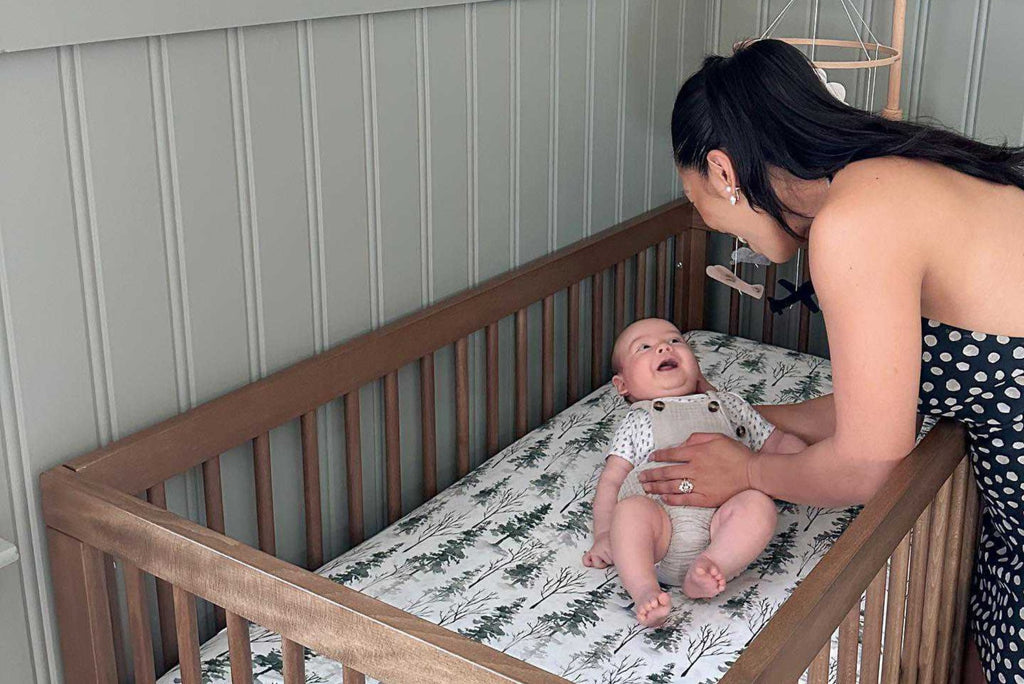Sleep Solutions: When to Transition Your Baby From Bassinet to Crib

Figuring out when to transition a baby to the next schedule, next size, next food, next phase, is one of the more challenging parts of parenthood. Transition points tend to be the place where parents have the most questions - when is the right time? What are the risks if I’m too late or too early? What are the signs I should be watching for? How do I know for sure I’ll get this part right?
The good news: for most transitions, exact timing isn’t necessary. Just like your due date or when to expect teething to start, most transitions happen inside of a window of weeks, or even months, of noticing the signs and taking the next steps!
And in keeping with the pattern, the right time to transition your baby from bassinet to crib is a window - and we’re here to help you recognize it!
Bassinets aren’t a newborn must-have, but they’re a sleep solution that a lot of parents choose for the flexibility and convenience. Bassinets are smaller than cribs, and easier to move from room to room, allowing parents to keep their newborn close for the first few months. They’re a safe sleep option for newborns, but not a necessary one - newborns can also sleep safely in a crib from birth.
So more good news! There’s no too-early time to transition from bassinet to crib. It’s simply whenever you, the parent, feel ready.
A few quick safe sleep reminders - for baby’s safety, both your bassinet AND your crib should have:
- A flat sleeping surface (no inclines or declines)
- A firm, well-fitting mattress designed for infant sleep
- A fitted sheet and NOTHING else - no stuffies, blankets, pillows, or bumpers
Most bassinets are designed to be used from birth - 4 to 6 months of age. It’s time to transition your baby to their crib when they meet the manufacturer's recommendation for height, weight, or age, OR when they start sitting up on their own or pushing up on their hands and knees - whichever comes first. For most babies, these milestones will happen within that 4-6 month window, but if your baby is a little early or a little late, don’t worry! The range of normal is wide, and your pediatrician can answer any questions or concerns you might have.
It’s time to transition your baby from the bassinet to the crib when:
- They reach the manufacturer’s recommended weight, height, and age.
- They can sit independently or push up on all fours.
- They start to roll over on their own.
- OR earlier, if you feel ready to have baby sleep in the same designated spot every nap and bedtime.
Now that you’ve identified your transition window, here are a few quick tips to help make the transition from bassinet to crib as smooth and sleep-filled as possible:
- Start with naps. Let the baby get used to the new space by transitioning naps to the crib first.
- Stick to your routine. Make sure everything about your sleep routine stays the same while the location changes. Keep nap times, routines, and bedtimes consistent so that the baby doesn’t have to deal with too many changes all at once.
-
Keep sounds, smells, and darkness levels familiar. Do your best to match the environment the new crib is in to the sensory environment of the bassinet. Use the same sound machine, make sure the light levels are similar, and dress the baby in a familiar sleep sack.
Transitions take time. Expect a few days of unsettled sleep and extra needs from your little one. In time, the crib will be just as familiar as the bassinet once was, and you and baby can snooze blissfully until the next transition window arrives!
(And when the time comes, hop over to When to Lower the Crib Mattress or Time for a Big Kid Bed? - we’ve got your back.)


